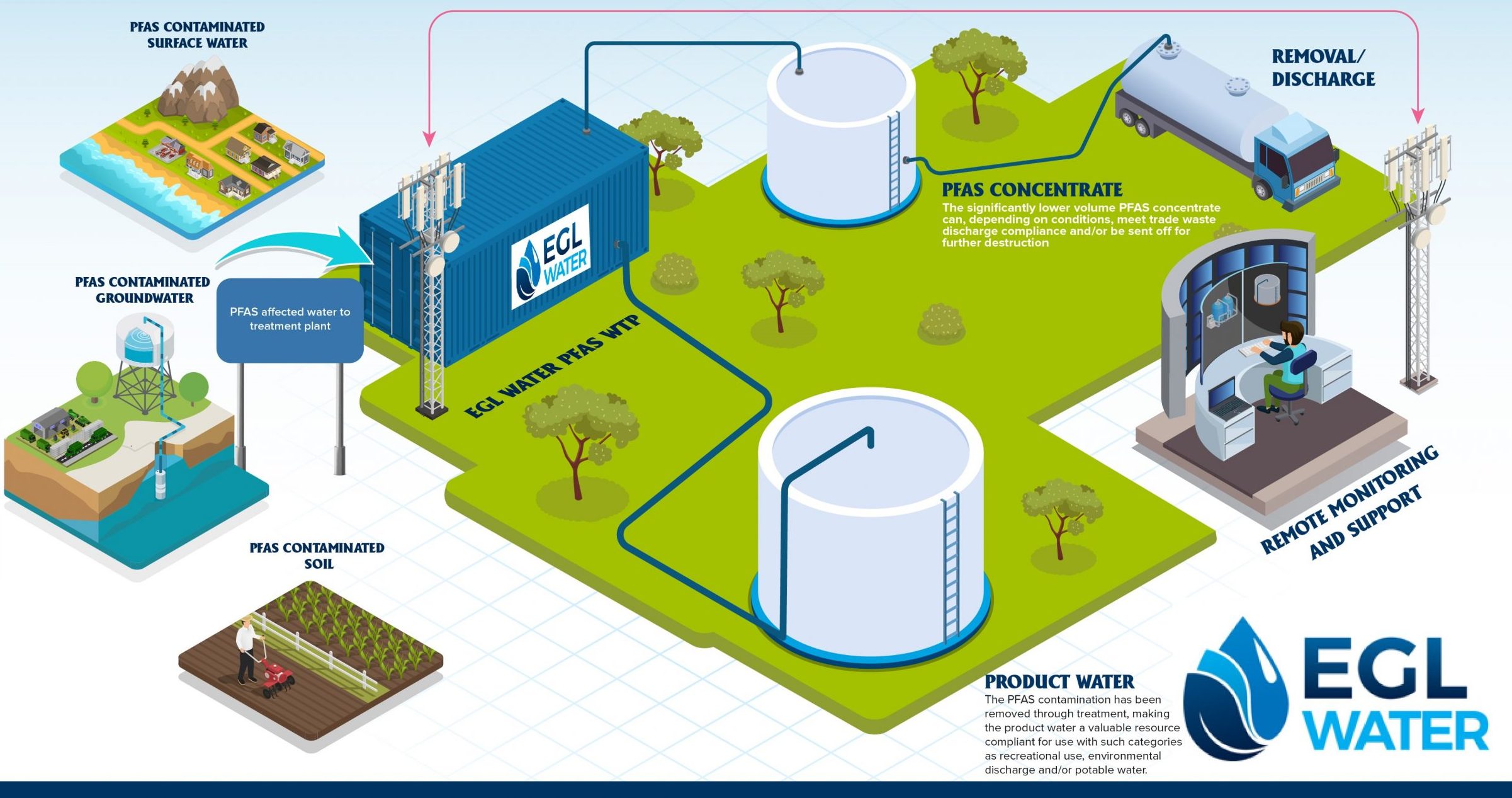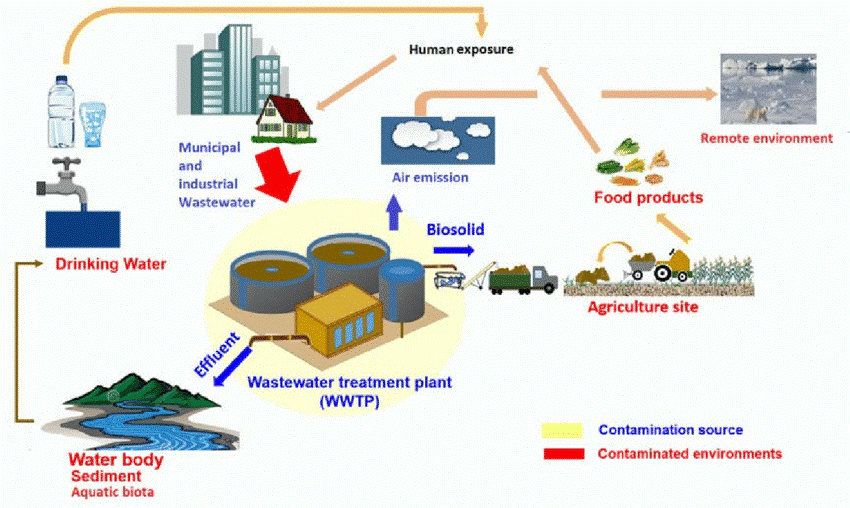M270 PFAS Treatment for Municipal Water Systems
Wiki Article
Your Overview to PFAS Treatment Technologies and Benefits
The frequency of PFAS contamination in water sources necessitates a comprehensive understanding of available therapy innovations. Each innovation not just targets particular PFAS substances but also plays a critical duty in enhancing general water high quality and securing ecological honesty.Understanding PFAS Contamination
Understanding PFAS contamination is important for addressing its prevalent impact on environmental and human health and wellness (m270 pfas treatment). Per- and polyfluoroalkyl compounds (PFAS) are a team of synthetic chemicals commonly used in different industrial and consumer products due to their water- and grease-resistant residential properties. Generally located in firefighting foams, non-stick cookware, and water-repellent fabrics, PFAS have actually gotten in the setting via production processes, wastewater discharges, and leaching from land fillsOnce launched, these substances linger in the environment, resulting in widespread contamination of dirt and water sources. Their unique chemical structure, characterized by solid carbon-fluorine bonds, provides them immune to deterioration, resulting in a phenomenon recognized as "permanently chemicals." PFAS can accumulate in the human body and the food chain, possibly creating unfavorable health results, including immune system disturbance, developmental concerns, and a raised danger of certain cancers cells.
Regulative firms and health and wellness companies are progressively recognizing the relevance of PFAS contamination, triggering initiatives to keep track of, analyze, and alleviate its effects. Recognizing the pathways of PFAS contamination is essential for educating public law and creating effective approaches to safeguard both ecological and human health.
Summary of Therapy Technologies
Numerous therapy modern technologies have actually been established to attend to the challenges postured by PFAS contamination in water and dirt. These technologies can be generally identified right into several categories, each with its distinct systems and efficiency in getting rid of PFAS compounds.One famous strategy is ion exchange, which uses resin materials to record and get rid of PFAS from polluted water. This technique is specifically effective for short-chain PFAS and can achieve considerable decreases in focus levels. One more modern technology, progressed oxidation processes (AOPs), employs strong oxidants and ultraviolet light to break down PFAS into less dangerous substances. AOPs are appropriate for dealing with a large range of PFAS compounds however may require mindful optimization to optimize efficiency.

Triggered Carbon Filtering
Turned on carbon filtration is a widely utilized method for the removal of PFAS from contaminated water, known for its ability to adsorb a broad variety of natural compounds. This modern technology uses turned on carbon, a very permeable product with an extensive surface area, which helps with the binding of PFAS molecules through physical adsorption. The performance of triggered carbon in getting rid of PFAS is influenced by numerous elements, consisting of the kind of carbon used, the get in touch with time, and the focus of PFAS in the water.One of the benefits of activated carbon purification is its convenience; it can be applied in various arrangements, such as granular turned on carbon (GAC) systems or powdered triggered carbon (POLITICAL ACTION COMMITTEE) systems. GAC systems are usually employed in larger-scale applications, while PAC can be made use of in smaller or short-term configurations. The pfas waste management innovation is fairly easy to run and preserve, making it accessible for lots of water treatment centers.

Ion Exchange Systems
Ion exchange systems stand for one more reliable technique for the removal of PFAS from infected water, matching approaches like triggered carbon filtration. These systems operate the principle of exchanging ions in the water with ions hung on a resin material. Ion exchange materials can be especially formulated to target the adversely charged PFAS compounds, effectively catching them and permitting cleaner water to go through.Among the key advantages of ion exchange systems is their capacity to remove a vast variety of PFAS, consisting of both long-chain and short-chain variants. This convenience makes them appropriate for different applications, varying from community water treatment to commercial processes. Furthermore, ion exchange systems can often accomplish reduced detection limitations for PFAS contrasted to some various other treatment techniques, hence boosting water quality.
Nonetheless, it is vital to keep an eye on and take care of the regeneration of ion exchange media, as the performance can decline with time due to saturation. Appropriate upkeep and replacement of the material are critical for sustaining the system's performance. In general, ion exchange systems supply a dependable and efficient solution for PFAS removal, contributing considerably to secure alcohol consumption water criteria and ecological protection.
Advanced Oxidation Processes
Advanced Oxidation Processes (AOPs) utilize powerful oxidants to effectively degrade PFAS substances in contaminated water. These innovative treatment methods generate highly reactive species, such as hydroxyl radicals, that can break down complex PFAS molecules into less hazardous byproducts. m270 pfas treatment. AOPs generally employ combinations of ultraviolet (UV) light, ozone, hydrogen peroxide, or Fenton's reagent, enhancing the oxidation potential and improving degradation performanceThe key benefit of AOPs lies in their ability to target a broad array of PFAS substances, consisting of both long-chain and short-chain variations. This adaptability is vital, as PFAS contamination typically includes mixtures of different substances with differing chemical structures. AOPs can be integrated right into existing water treatment systems, making them a functional option for several towns and markets.
However, the implementation of AOPs can be resource-intensive, needing mindful factor to consider of functional prices and power usage. In addition, while AOPs work in damaging down PFAS, they might not entirely get rid of all by-products, requiring additional treatment actions - m270 pfas treatment. In general, AOPs stand for a promising method for addressing PFAS contamination, adding to cleaner water resources and boosted public health security

Conclusion
In conclusion, resolving PFAS contamination calls for a detailed understanding of offered therapy modern technologies. Triggered carbon purification, ion exchange systems, and advanced oxidation processes each present one-of-a-kind benefits for efficiently removing these harmful substances from water resources. By picking the appropriate technology, areas can boost water quality, safeguard public health, and minimize the ecological risks connected with PFAS exposure. Proceeded research and execution of these techniques are essential for effective management of PFAS contamination in impacted areas.Report this wiki page